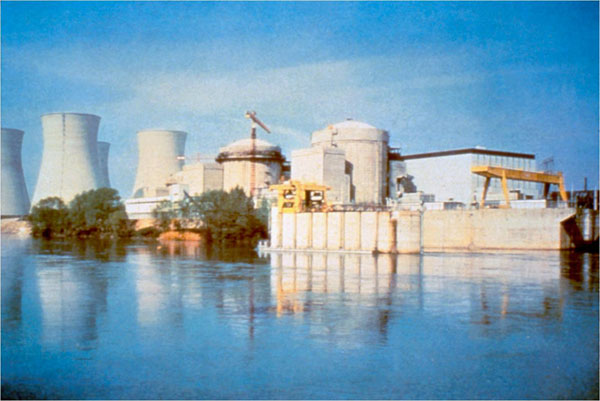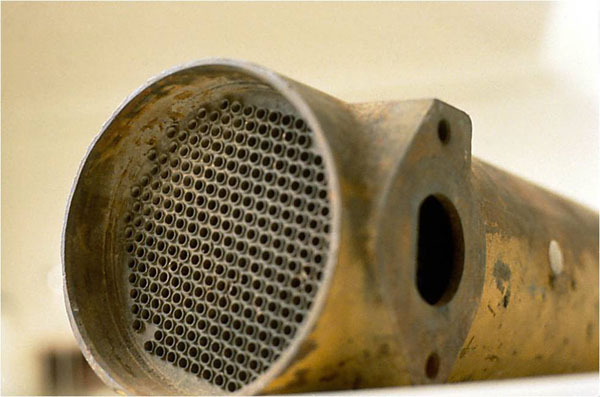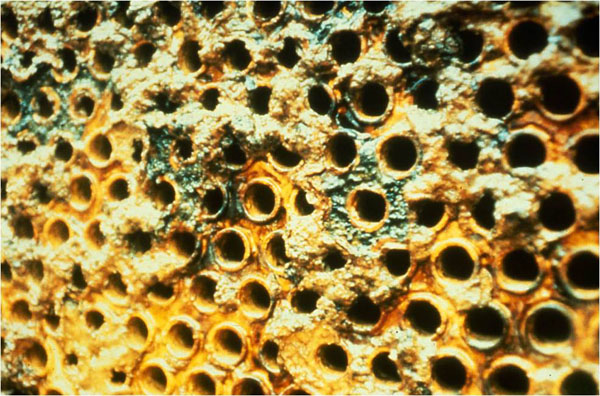Chapter 5 Biofilms in Industrial Environments
Section 2 Industrial Water Systems
Page 2 Biofouling-Biocorrosion in Industrial Water Systems
A substantially updated version of the hypertextbook is available here. Please migrate to that version. This one will eventually disappear.
LeftBar
Copyright © Alfred B. Cunningham, John E. Lennox, and Rockford J. Ross, Eds. 2001-2008
Biofouling-Biocorrosion in Industrial Water Systems
Let us begin with the category of biofouling an biocorrosion in industrial water systems. Industrial water systems typically have copiotrophic??? (nutrient-rich) water which is circulated at ambient temperatures which are favorable of rapid microbial growth. These conditions can result in large biofilm deposits forming along the flow path as shown here in this small diameter stainless steel pipe.

Image 1. Stainless Steel Pipe with biofilm deposits

Image 2. Nuclear Power plant.
This type of large-scale biofouling is common in many industrial water systems including nuclear power plants.

Image 3. Heat exchanger, clean.
Here is a picture of a heat exchanger of the type used in the emergency cooling water systems of nuclear power plants.

Image 3. Heat exchanger, fouled.
Here is the same type of heat exchanger heavily fouled with biofilm and corrosion deposits. Such deposits can severely reduce the heat transfer capacity of heat exchangers thereby impacting the safe operation of emergency cooling water systems in power plants.
